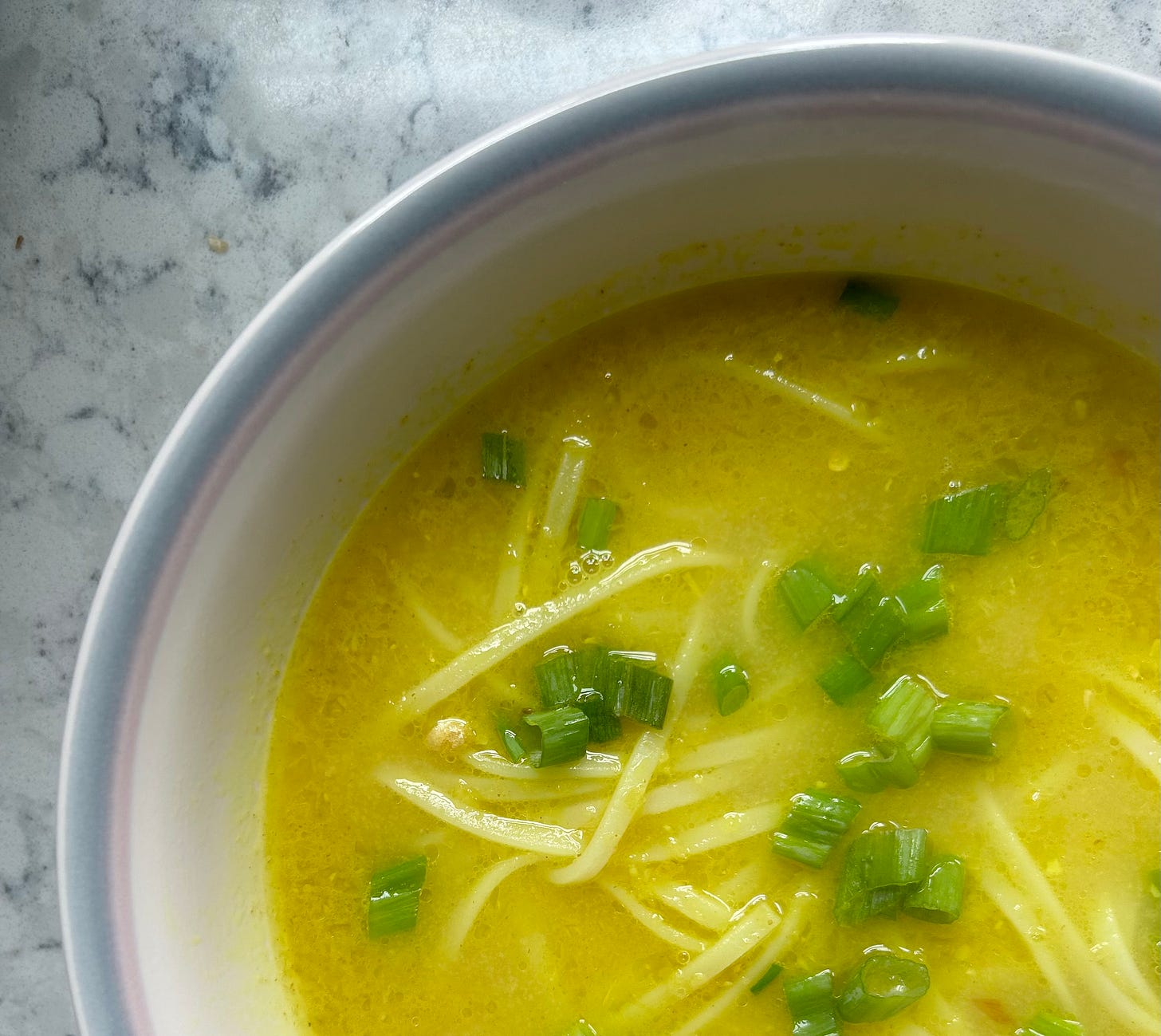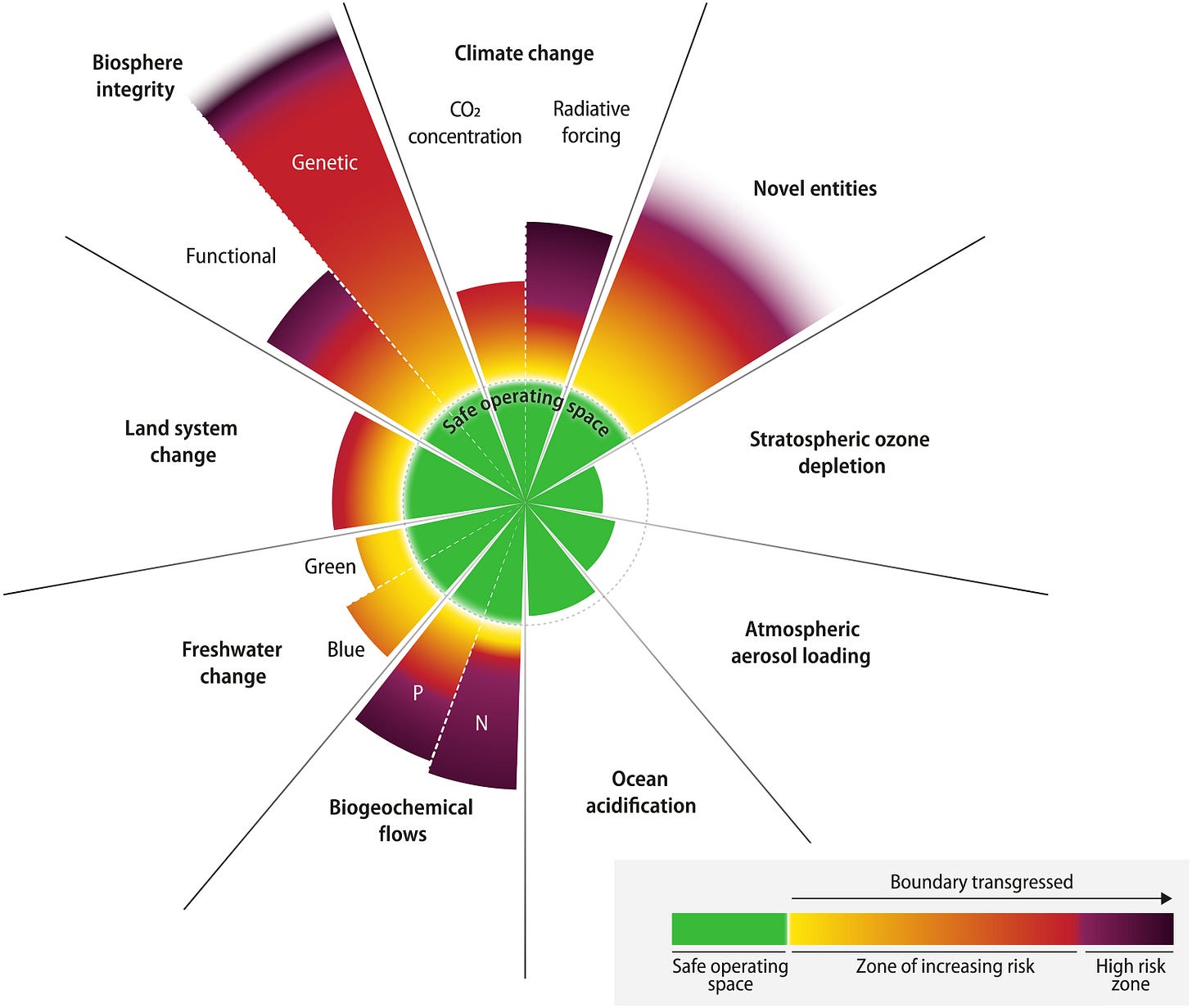Ginger Turmeric Noodle Soup I made for Theo
If you hadn’t heard already, this week in NYC was Climate Week where climate leaders from business, government and civil society gather for a week to discuss the industry, recent trends, innovations and share notes on how we can remain hopeful in the face of global warming.
Having left my job in corporate sustainability I feel outside the bubble of #climateweek and just browsing through the hundreds of events had me feeling both massive FOMO as well as hopeful that all these conversations are happening and attempting to include diverse topics and incorporate intersectionality.
Some of the conversations that caught my eye were:
From eco-anxiety to eco-optimism: Listening to a generation of resilient youth
What Can Chefs Do About Climate Change: A Conversation About Solutions, Hope, and Deliciousness
For those of us that were not deep in climate conversations all week I’d like to share a concept I’ve learned about recently that has expanded my understanding and concern for the planet.
The concept is planetary boundaries and there are 9 of them.
A recent assessment published in Science Advances found that six out of nine planetary boundaries had been broken because of human-caused pollution and destruction of the natural world.
So before we get tunnel vision that greenhouse gases and fossil fuels are our main concern, unfortunately we also have to be mindful of the other limits on our existence. Here is my non-scientific understanding of the 9 boundaries:
Biosphere Integrity - Assessing the rate of species extinction
Climate Change - CO2 concentration causing warming
Novel Entities -These include synthetic chemicals and substances (e.g., microplastics, endocrine disruptors, and organic pollutants); in the environment
Land System Change -Land-use conversion and fires are causing rapid change in forest area and deforestation of the Amazon tropical forest has increased such that it has now transgressed the planetary boundary
Freshwater Change - Available water for human consumption
Stratospheric ozone depletion - We’re doing okay here thanks to the Montreal Protocol
Ocean Acidification - Seawater absorbs CO2, and as CO2 dissolves in water it forms carbonic acid. The build-up of carbonic acid changes the pH value of the surface water, making it more acidic. The sea is now 30% more acidic than it was at the end of the eighteenth century.
Atmospheric aerosol loading - Don’t really understand this one
Biogeochemical flows - Nitrogen and phosphorus constitute fundamental building blocks of life, and their global cycles have been markedly altered through agriculture and industry.
Based on this assessment, six boundaries have been passed and two are judged to be close to being broken: air pollution and ocean acidification. The one boundary that is not threatened is atmospheric ozone, after action to phase out destructive chemicals in recent decades led to the ozone hole shrinking.
Science and the world at large are really concerned over all the extreme climate events hitting societies across the planet. But what worries us, even more, is the rising signs of dwindling planetary resilience.
As some may know, we are now in the Holocene period, which began with the end of the last ice age and during which agriculture and modern civilizations evolved, which was characterized by relatively stable and warm planetary conditions. Human activities have now brought Earth outside of the Holocene’s window of environmental variability, giving rise to the proposed Anthropocene epoch.
I don’t share this to instill fear. I share this to deepen our collective understanding of how our human footprint has impacted the planet and how we cannot take our comfortable living for granted.
Yes there is a strong and growing community of climate scientists and activists and professionals contributing everyday but I believe every citizen should stay informed as to what is going on and stay connected to our relationship with the planet in our daily lives and decisions. Not out of a sense of guilt but from a place of connection.
💎 Gems of the Week 💎
I heard about Ends and Stems on the Essential Ingredients podcast and I love what she is doing to help people reduce food waste in the kitchen and use up whatever is left in the fridge
Fiber Fueled- this book is OPENING my eyes. I have a lot to say on this topic but I’ll sum it up when I finish. For now, I highly recommended reading it so we can chat
This Sicilian Lentil Soup recipe
Matriark Foods - I wrote last week about a dinner I attended with all sustainable brands and Matriark has become one of my faves because through their supply chain they are supporting a regional food system while making use of almost wasted produc AND their products are good. I have been loving their Upcycled Vegetable Concentrate that you can get from Farm to People (use code NJLOVESLOCAL)
Disturbed by this piece from the Washington Post - The food industry pays ‘influencer’ dietitians to shape your eating habits
Ginger Turmeric Noodle Soup 🍲
So people are getting sick out there including my partner Theo and this is a soothing and healing soup to get them through it.
I got the base of the recipe from Hetty McKinnon
The first step is to make her paste. Originally this was a bit intimidating but now that I’ve made it a couple times its worth it and there is some leftover paste you can freeze and use as a base for curry or as a salad dressing.
Place the paste in a pot until aromatic
Add carton of broth
Add the can of coconut milk
Let it simmer for 6-8 minutes
Cook rice or udon noodles separately, could also serve with rice if you don’t have
Add spinach and a squeeze of lime and salt to the pot
Add in the noodles
Serve topped with cilantro, more lime and crushed peanuts.






I learn something new every read - keep up the great writing 👍🏼
I didn’t know about planetary boundaries. You explained them well! Very interesting.